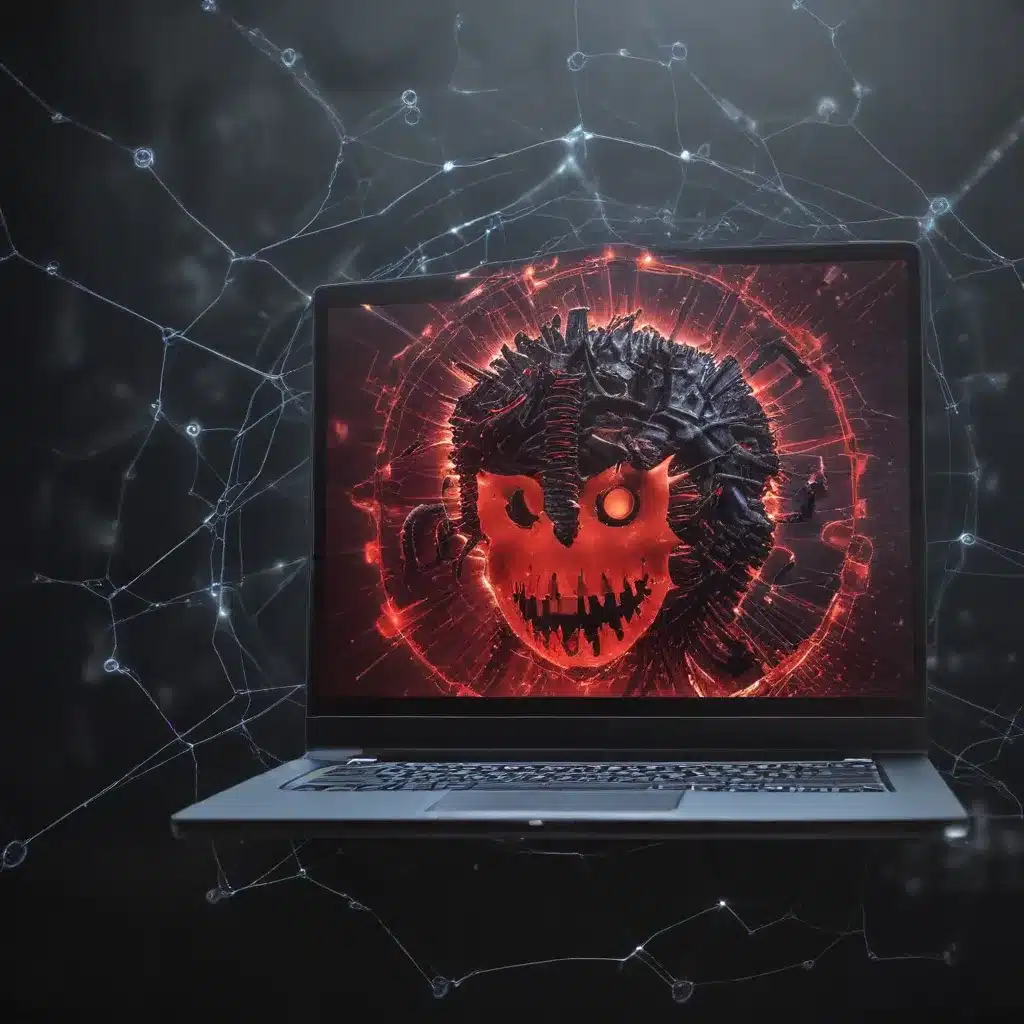
Understanding the Modern Threat Landscape
The cybersecurity landscape is in a constant state of flux, with threats becoming increasingly sophisticated and diverse. From the nuisance of phishing attacks to the far-reaching consequences of state-sponsored espionage, organizations of all sizes and industries face a daunting challenge in keeping their critical infrastructure secure.
At the heart of this evolving threat landscape are the rapid advancements in technology, particularly the rise of artificial intelligence (AI) and its double-edged impact on cybersecurity. While AI helps cybercriminals devise more effective attacks, it also provides defenders with new tools to combat these threats.
Ransomware: Evolution and Impact
Ransomware, in particular, has undergone a significant transformation, shifting from broad, scattershot attacks to highly targeted operations against specific sectors. Attackers are leveraging AI to bypass traditional security measures, making their attacks more potent and disruptive.
The 2017 WannaCry ransomware attack, which affected over 200,000 computers across 150 countries, highlighted the rapid spread and widespread disruption that ransomware can cause, particularly in critical sectors like healthcare and finance. More recently, the 2021 Colonial Pipeline attack demonstrated the devastating impact of ransomware on critical infrastructure, disrupting fuel supplies across the Eastern United States and causing widespread panic.
State-Sponsored Espionage: A Growing Concern
State-sponsored espionage presents an even greater challenge, driven by geopolitical tensions and the potential for far-reaching consequences, from intelligence gathering to outright sabotage. The 2020 SolarWinds attack, believed to be the work of a foreign government, underscored the scale and sophistication of these cyber operations, compromising numerous U.S. government agencies and private companies.
The Internet of Things (IoT) and Cyber-Physical Risks
As the Internet of Things (IoT) and Industrial IoT (IIoT) devices continue to proliferate, the risks to critical infrastructure are skyrocketing. These interconnected systems create new entry points for cyber attackers, blurring the lines between physical and cyber security. Imagine a scenario where an attacker gains control over IoT devices in a smart city, causing traffic lights to malfunction, security systems to fail, and essential services to be disrupted. The potential for chaos is enormous, highlighting the need for a holistic approach to security that encompasses both the cyber and physical aspects of our infrastructure.
Persistent Threats: Malware and Ransomware
Malware and ransomware remain relentless, growing in frequency and sophistication. These attacks often target interconnected systems, including operational technology (OT) devices, causing major disruptions. One of the most disruptive and costly ransomware attacks on critical infrastructure was the NotPetya attack in 2017, which initially targeted Ukrainian businesses but quickly spread globally, causing billions of dollars in damages.
Advanced Persistent Threats (APTs): Stealth and Persistence
Advanced Persistent Threats (APTs) are all about staying hidden and persistent. Attackers use techniques like spear-phishing, malware, and exploiting vulnerabilities to gain a foothold, then escalate privileges and move laterally within networks. Combating these threats requires advanced detection tools and comprehensive security frameworks. The Stuxnet worm, discovered in 2010, is a prime example of an APT targeting critical infrastructure, in this case, Iran’s nuclear facilities, causing significant damage to their centrifuges.
Living-off-the-Land (LotL) Techniques
Living-off-the-Land (LotL) techniques pose an even greater challenge, as attackers use legitimate tools and features within an organization’s network to carry out their malicious activities. These stealthy attacks require new defensive strategies, emphasizing vigilant monitoring and strong security measures to identify unusual patterns that might indicate a LotL attack.
The Impact of Geopolitics and Nation-State Conflicts
Geopolitical tensions and nation-state conflicts are major drivers behind cyberattacks on critical infrastructure. These cyber operations aim to assert dominance, retaliate, or influence global politics. During the conflict between Russia and Ukraine, for instance, cyber attacks targeted Ukraine’s power grid, causing widespread blackouts and underscoring the potential for cyber warfare to impact civilian life.
Developing Robust Cybersecurity Measures
To counter these evolving threats, nations are ramping up their cybersecurity measures, fostering international collaborations, and establishing quick response teams. International norms and treaties to regulate state actions in cyberspace are becoming essential, aiming to stabilize the global cybersecurity landscape.
Cooperation at the international level is crucial in the fight against cyber threats. Organizations like NATO and the European Union are working to develop common cybersecurity standards and response protocols, while bilateral agreements between countries can facilitate information sharing and coordinated responses to cyber incidents.
At IT Fix, we understand the urgency of addressing the evolving threat landscape. By staying informed about the latest trends, leveraging threat intelligence, and implementing comprehensive security strategies, organizations can bolster the resilience of their critical infrastructure and protect against future cyberattacks.
Proactive Cybersecurity Measures
To stay ahead of the curve, organizations must adopt a proactive approach to cybersecurity. This includes:
- Continuous Risk Assessment: Transitioning from one-off risk assessments to a continuous model that involves ongoing monitoring, vulnerability management, and strategic risk management.
- Robust Incident Response: Developing comprehensive incident response plans with clear roles and effective collaboration across teams to manage and remediate incidents.
- Continuous Improvement: Embracing a culture of continuous improvement, regularly reviewing and updating security measures to adapt to the evolving threat landscape.
- Collaboration and Threat Intelligence: Fostering international cooperation and information sharing to stay informed about emerging threats and coordinate responses.
- Securing the Cyber-Physical Divide: Implementing a holistic security approach that addresses the interconnectedness of cyber and physical systems, mitigating risks across the entire infrastructure.
By embracing these proactive measures, organizations can enhance their cybersecurity posture, protect their critical infrastructure, and safeguard their operations against the ever-evolving threat landscape.
Conclusion
The cybersecurity landscape is in a constant state of flux, with threats becoming increasingly sophisticated and diverse. From ransomware to state-sponsored espionage, organizations face a daunting challenge in keeping their critical infrastructure secure.
By understanding the modern threat landscape, adopting proactive cybersecurity measures, and fostering international collaboration, organizations can bolster their resilience and protect against future cyberattacks. At IT Fix, we are committed to providing practical tips and in-depth insights to help our readers navigate the evolving cybersecurity landscape and safeguard their critical infrastructure.












